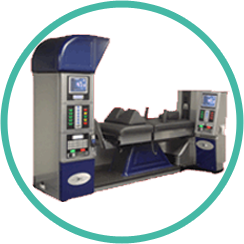Dallas/Fort Worth, Texas has one of the highest drunk-driving rates in the state (second only to Houston.) It’s no surprise that so many of the clients that come into Dr. Dale Sandvall’s chiropractic clinic are suffering from the aftereffects of auto accidents — Fort Worth has more such wrecks than most towns by a significant margin. Most of those patients come in for relief from some variation of whiplash.
Whiplash: Too Much Back and Forth
One of the most common types of injuries in a car crash is called ‘whiplash,’ so named because of the manner in which your head ‘whips’ back and then forward and then back again when you crash into something in front of you (or get crashed into from behind.) Whiplash injuries can be mild or serious, and are often completely mistreated by the major medical providers.
That’s because painkillers and other pharmaceuticals only cover up the problem; they do nothing to solve it. They essentially expect the body to heal itself, but the nature of a whiplash injury is such that the body cannot. Muscles repair over time, but a misaligned bone or a pressured nerve will remain misaligned or pressured until an expert does something about it.
That’s what chiropractic medicine does: relax, realign, and literally straighten out your body so that its innate healing ability can take over and do the job evolution created for it.
The Facts About Whiplash
If you’ve been in an accident in the past few weeks and are noticing any level of pain or disability in your neck or back, call Dr. Dale Sandvall today. The longer you go untreated, the greater the risk of permanent damage.
Cold Laser Treats, Back Pain, Neck & Shoulder Pain, Wound/Burn Healing, Bone Healing

The first non-invasive body contouring procedure to remove excess fat.(really.)

We offer the latest cutting edge technology in the non-surgical treatment of serious chronic lower back pain and sclatica
